Also known as the Ocean State, Rhode Island can be found in the northeastern part of the United States, more specifically in the New England region. As you probably know, it is the smallest state in the U.S. and has a population of under 1.1 million people.
Its nickname stems from the fact that it has a rather long coastline – about 400 miles (640 km) – and that 14% of the state’s area consists of inlets and large bays.
Regarding geography, Rhode Island is mostly a flat state – its highest point stands at 812 feet (247 m) above sea level, while its mean elevation is only 200 feet (61 m). The eastern part of Rhode Island consists of lowlands, while the western part of the state is an upland. The state is also home to Narragansett Bay which, in turn, hosts more than 30 islands.
Given the above, it’s safe to assume that the Ocean State is rich in both flora and fauna. The flora is pertinent to today’s topic, so here are some native plants of this wonderful state!
What Is a Native Plant?
Native or indigenous plants are species of flora that have been present in a certain region/area for thousands of years. In time, they adapted perfectly to the region’s climate, soil conditions, light, weather, etc. Now they’re part of their ecosystems, where they occur naturally.
In this respect, native plants are like native people – they know the land they’re sitting on better than anyone.
8 Native Plants in Rhode Island
1. Speckled Alder
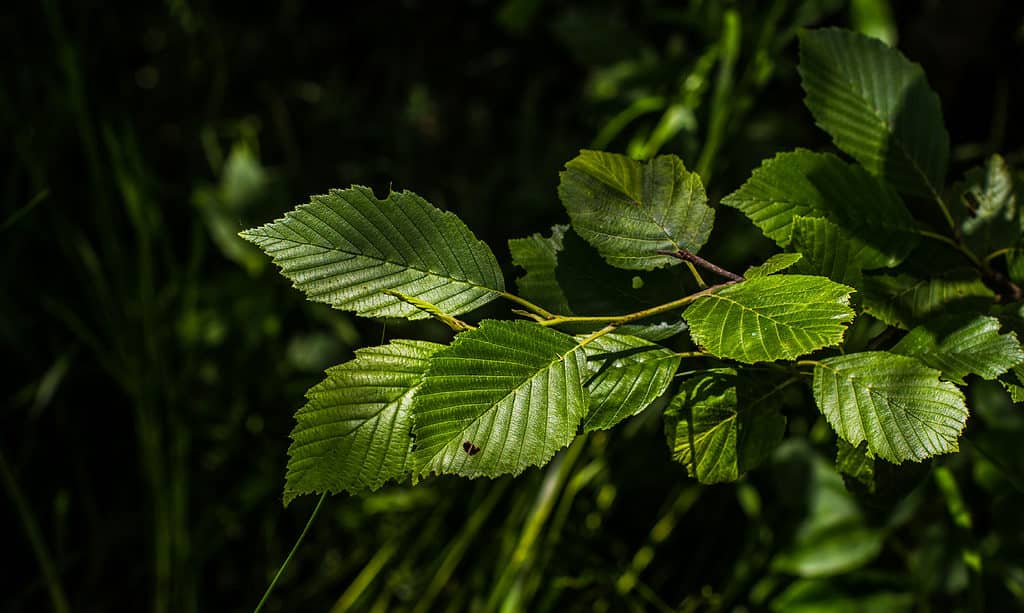
The speckled alder can grow up to 49-66 feet in height.
©IvanaStevanoski/Shutterstock.com
| Speckled Alder | |
|---|---|
| Scientific name | Alnus incana |
| Type of plant | Deciduous |
| Distribution | The cooler parts of the Northern Hemisphere – Western coast of North America, Northeastern part of the U.S., Northern Europe, Northwestern Asia |
Known as the speckled or gray alder, Alnus incana is essentially a shrub part of the Betulaceae (birch) family. It can be found in the Northern Hemisphere, as it prefers cooler regions. You can come across multiple speckled alder specimens in wetlands and swamps.
The speckled alder can grow up to 49-66 feet (15-20 m) in height and has smooth gray bark for almost its entire life. A specimen of Alnus incana can live up to 100 years.
This shrub’s main characteristics are its broad, matte green leaves, speckled bark, and small cones. Out of its six subspecies, Alnus incans subsp. rugosa is the one that can be found in Rhode Island (and pretty much throughout the Northeastern United States).
2. Yellow Wild Indigo
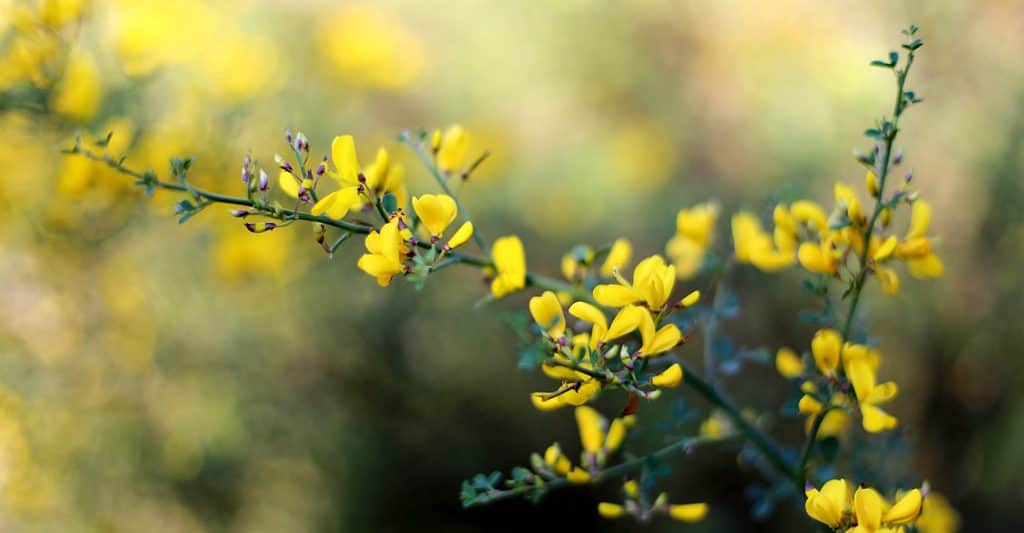
The yellow wild indigo is often referred to as wild indigo, yellow false indigo, and horsefly weed.
©iStock.com/Wirestock
| Yellow Wild Indigo | |
|---|---|
| Scientific name | Baptisia tinctoria |
| Type of plant | Herbaceous |
| Distribution | Eastern North America |
The yellow wild indigo is often referred to as wild indigo, yellow false indigo, and horsefly weed. It is a herbaceous plant, meaning that it has no persistent woody surface stems. Almost all biennial and annual plants are considered herbaceous, while many perennials can also be found in this category.
The yellow wild indigo can be found throughout eastern North America as a native plant. While abundant in some regions, in others, it is considered threatened (such as Kentucky) or endangered (Maine).
You might increase your chances of spotting a yellow wild indigo during your travels if you explore open woodland and dry meadow ecosystems. The plant can reach heights of about 2-3 feet (61-91 cm), so it’s quite difficult to miss, especially given its bright yellow flowers.
3. Leatherleaf

The leatherleaf plant is a dwarf shrub in the heath/heather family,
Ericaceae.
©Grigorii Pisotsckii/Shutterstock.com
| Leatherleaf | |
|---|---|
| Scientific name | Chamaedaphne calyculata |
| Type of plant | Perennial |
| Distribution | Eastern North America, Finland, Japan – cool temperate and subarctic regions in the Northern Hemisphere |
Also known as cassandra, the leatherleaf plant is a dwarf shrub part of the heath/heather family (Ericaceae). It can be found in acidic bogs because of their constant cold temperatures. If you see one leatherleaf, you’re most likely in a colony of plants as well – as they are known to grow in large and constantly spreading colonies.
The leatherleaf plant grows up to about 59 inches (1.5 m) tall and features leathery leaves (thick, dull green, and with silvery scales). Even though the plant is considered evergreen, you can spot it sporting a red-brown color during winter.
The leatherleaf flowers from April to June. Its flowers are rather small, 0.19-0.23 inches (5-6 mm) long, and have a bell-like shape. They are located on terminal racemes.
4. Tall White-Aster
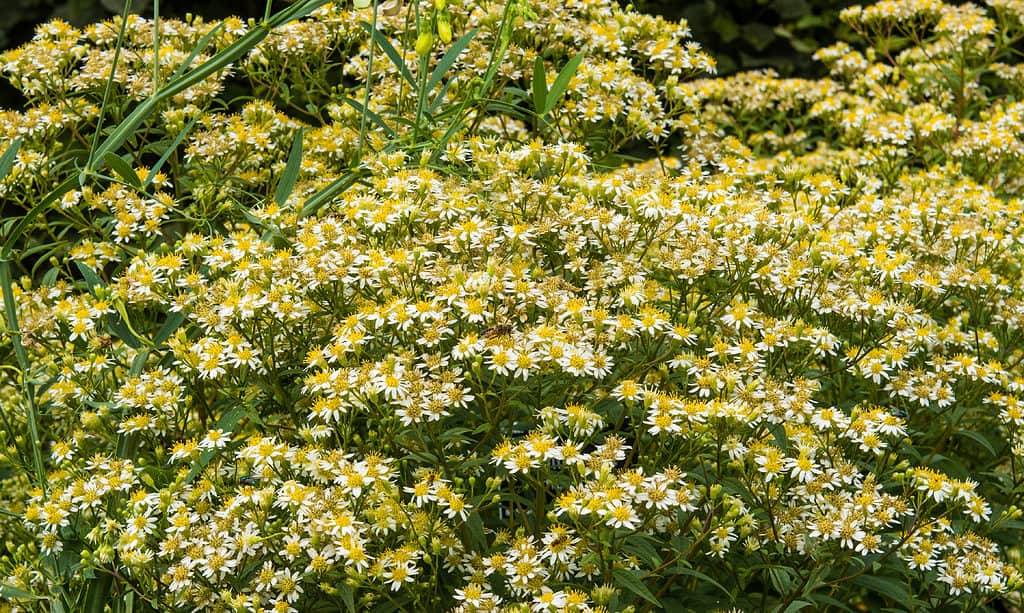
The tall white-aster is a perennial plant found throughout North America.
©Peter Turner Photography/Shutterstock.com
| Tall White-Aster | |
|---|---|
| Scientific name | Doellingeria umbellata |
| Type of plant | Perennial |
| Distribution | North America – Canada, eastern and north-central United States |
Also known as the parasol whitetop or tall flat-topped white aster, the tall white-aster is a perennial plant found throughout North America. It is characterized by its disc florets that are more conspicuous than the white ray florets. It is part of the daisy, aster, and sunflower family (Asteraceae).
The tall white-aster usually grows in full sun but does well in part shade too. In terms of soil, it prefers draining wet but won’t be too bothered by moist soil either – if the soil is slightly acidic, the plant will love it.
There are two varieties of tall white-aster – var. pubens and var. umbellata. The second, Doellingeria umbelatta var. umbelatta, can be found in Rhode Island (and in more regions than the first variety).
5. Slender Goldentop

The slender goldentop is part of the aster, daisy, and sunflower family.
©iStock.com/Judy Darby
| Slender Goldentop | |
|---|---|
| Scientific name | Euthamia caroliniana |
| Type of plant | Perennial |
| Distribution | Atlantic Coastal Plain, Great Lakes region, Indiana, Kentucky |
Also known as Carolina grass-leaved goldenrod, the slender goldentop is part of the aster, daisy, and sunflower family. Its aspect is unmistakable, so to speak – you can tell just from a glance that it is a daisy. On the other hand, spotting it might be difficult, as it is one of the few U.S. native plants listed as Vulnerable.
The slender goldentop faces extinction mainly because of habitat loss – its normal range has been disturbed as the respective areas have seen a significant increase in population and not only.
This perennial grows best in full sun, thriving in coastal areas. You can come across its lovely yellow shade in sandy areas like pine barrens. It is considered drought-tolerant and an important pollinator in its habitat.
6. White Ash
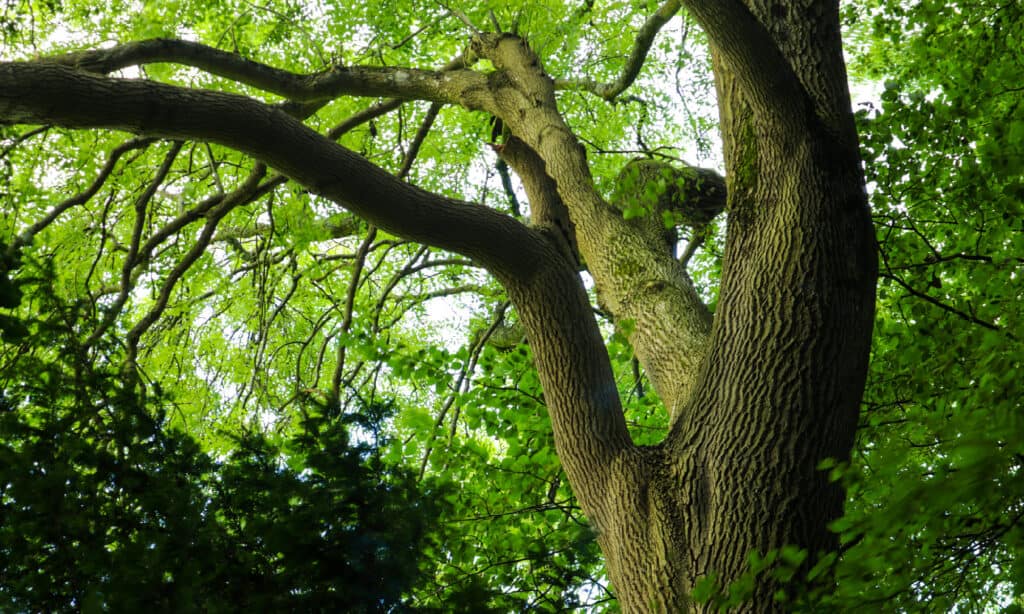
The white ash is also called American ash.
©iStock.com/Alex Montacute
| White Ash | |
|---|---|
| Scientific name | Fraxinus americana |
| Type of plant | Deciduous |
| Distribution | Eastern and central North America |
The white ash is also called American ash or, scientifically speaking, Fraxinus americana. It’s an ash species growing in the mesophytic hardwood forests in eastern and central North America. As you might know, a human breathes roughly 7-8 trees’ worth of oxygen annually. Unfortunately, the oxygen provided by white ash specifically is “decreasing,” as the species is critically endangered, even though approximately eight billion specimens are left in the U.S.
Despite being critically endangered, the white ash is reportedly one of the most used trees in the United States. White ash trees are cultivated wherever possible, mainly due to the high density of their wood – 20% of 41.8 lb/ft³ (670 kg/m³).
If you’re a baseball player, you probably know that most baseball bats you’ve touched so far were most likely made out of white ash wood.
7. Atlantic Manna Grass

The Atlantic manna grass is a grass species part of the
Glyceriagenus.
©Doug McGrady / flickr / CC BY 2.0 – License
| Atlantic Manna Grass | |
|---|---|
| Scientific name | Glyceria obtusa |
| Type of plant | Deciduous |
| Distribution | Eastern North America |
Don’t let its exquisite name fool you – the Atlantic manna grass is a grass species that is part of the Glyceria genus commonly found worldwide – America, Africa, Australia, and Eurasia. The Glyceria genus is often referred to as mannagrass or mana grass in the United States.
The downside is that it’s a bit difficult to differentiate between the many species of mannagrass. However, you should know that whatever type of grass you come across that looks a bit different than common grass is part of the Glyceria family. Glyceria striata, for example, shares many characteristics with Glyceria obtusa. Moreover, the latter can be distinguished by the flowers attached to the branches, not the inflorescence axis.
8. Swamp Rose-Mallow
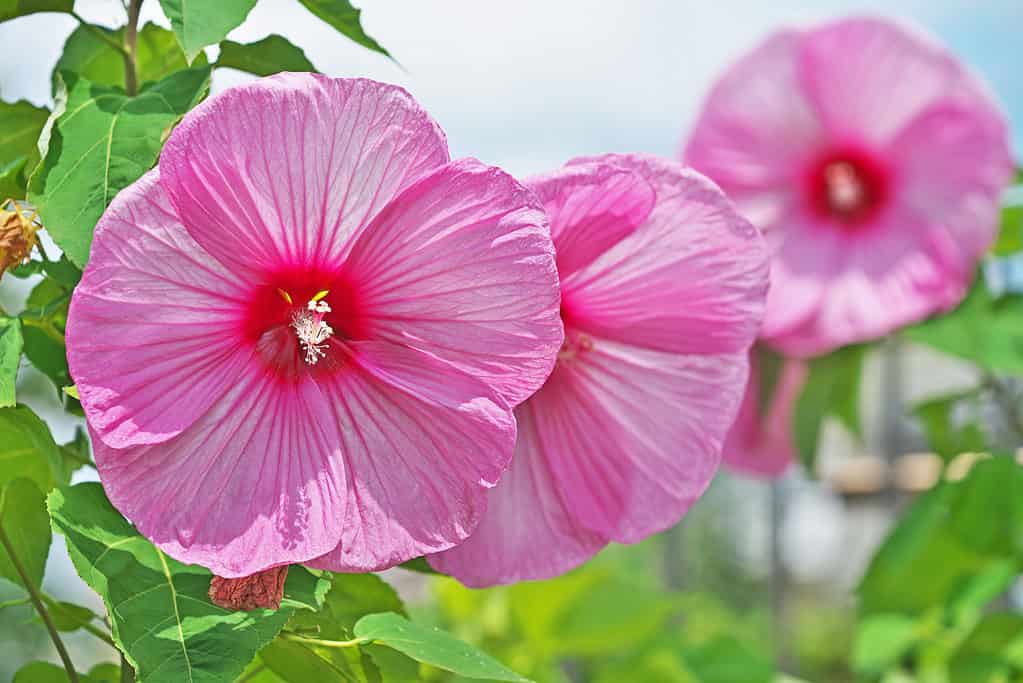
The swamp rose-mallow exists in numerous forms and varieties.
©iStock.com/igaguri_1
| Swamp Rose-Mallow | |
|---|---|
| Scientific name | Hibiscus moscheutos |
| Type of plant | Deciduous |
| Distribution | Eastern United States, southern Ontario |
Often called eastern rosemallow, crimsoneyed rosemallow, swamp rose-mallow, or rose mallow, this plant is native to the eastern region of the United States. You can find this plant in wetlands, especially along river shores.
The swamp rose-mallow exists in numerous forms and varieties, which is why exact information on a certain subspecies may be difficult to find. In terms of differences, they range when it comes to petal color. Given this is the main and, in some cases, the only difference, there is no taxonomic consensus in terms of nomenclature.
The plant can be identified by its small to medium height and somehow wrinkled yet extremely colorful petals adorned by pale yellow disc florets.
Up Next:
- Discover the Highest Point in Rhode Island
- The Longest Biking Trail in Rhode Island
- The 5 Best Places to Camp in Rhode Island this Summer
The photo featured at the top of this post is © iStock.com/Alex Montacute
Thank you for reading! Have some feedback for us? Contact the AZ Animals editorial team.






